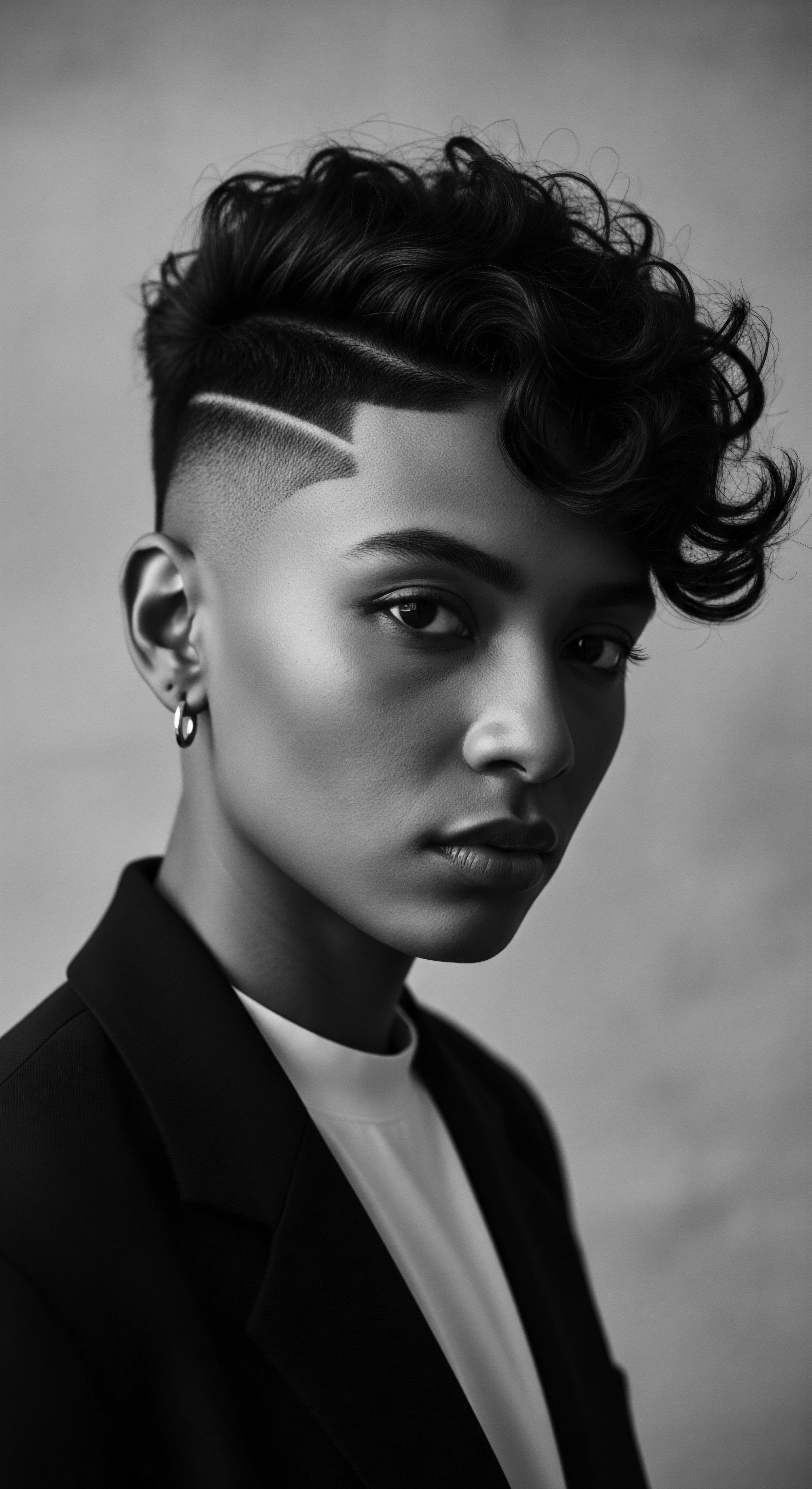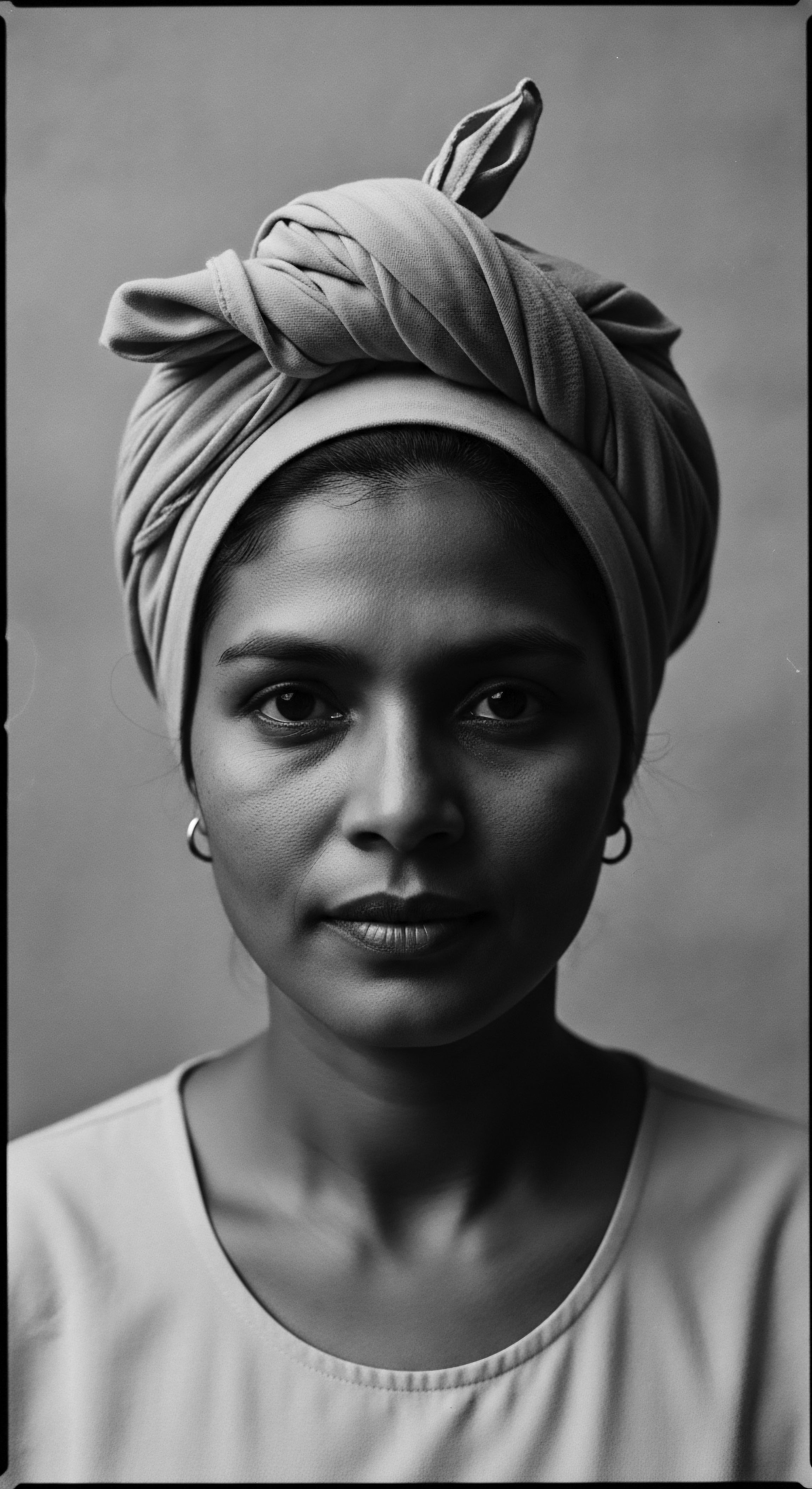
What is silk’s benefit for textured hair?
Silk benefits textured hair by reducing friction and preserving moisture, continuing an ancestral legacy of hair protection.

How does silk preserve textured hair moisture?
Silk preserves textured hair moisture by reducing friction and not absorbing hydration, honoring ancestral protective care.

What materials best preserve textured hair?
Optimal textured hair preservation relies on smooth, non-absorbent materials like silk and satin, echoing ancestral protective practices.

Does silk protect textured hair’s moisture?
Silk safeguards textured hair's moisture by reducing friction and retaining natural oils, continuing an ancestral practice of hair protection.

How does silk benefit textured hair in contemporary and ancestral care?
Silk safeguards textured hair by minimizing friction and retaining moisture, extending an ancestral legacy of protective hair preservation.

Can silk improve textured hair’s ability to retain moisture overnight?
Silk's smooth, non-absorbent nature significantly reduces friction and prevents moisture loss for textured hair during sleep, continuing ancestral protective traditions.

How do scientific principles confirm benefits of silk for textured hair?
Silk's smooth fibers and protein composition scientifically reduce friction and retain moisture, affirming ancestral practices for textured hair care.

What is the role of silk in traditional African hair care heritage?
Silk's gentle properties align with ancestral African hair care, offering profound protection and moisture retention for textured hair heritage.

How does silk’s low absorbency aid textured hair’s moisture retention?
Silk’s low absorbency preserves textured hair’s natural oils and applied moisture, reflecting ancestral wisdom in hair protection.

What scientific principles confirm the protective benefits of smooth fabrics on textured hair?
Smooth fabrics reduce friction and preserve moisture, validating ancestral practices that protect textured hair's delicate structure and heritage.

How does material choice influence textured hair’s nightly moisture retention?
Material choice for nighttime hair protection is a legacy influencing textured hair's nightly moisture retention through friction and absorption.

What ancestral practices align with silk’s scientific benefits for textured hair?
Ancestral practices for textured hair, often employing protective styles and natural fibers, mirror silk's benefits in friction reduction and moisture retention.

How does silk help textured hair?
Silk aids textured hair by reducing friction and preserving natural moisture, honoring centuries of ancestral hair preservation efforts.

How do silk and satin benefit textured hair biology?
Silk and satin protect textured hair biology by minimizing friction and preserving moisture, a practice deeply rooted in Black hair heritage.

Does silk help protect textured hair?
Silk safeguards textured hair by reducing friction and retaining moisture, a modern validation of ancestral protective heritage.

Why does textured hair benefit uniquely from silk’s smooth surface?
Silk's smooth surface minimizes friction and retains moisture, aligning with ancestral hair care for textured strands.

Why do silk and satin protect textured hair at night?
Silk and satin minimize friction and preserve moisture for textured hair, continuing a heritage of protection passed through generations.

Why did ancient communities value silk for textured hair?
Ancient communities valued silk for textured hair for its unparalleled smoothness, reducing friction and preserving precious moisture, mirroring ancestral hair care heritage.

What are the enduring cultural and scientific benefits of silk for textured hair?
Silk offers enduring cultural and scientific benefits for textured hair by reducing friction and retaining moisture, honoring a heritage of ancestral protection.

Do bonnets truly shield textured hair during sleep?
Bonnets protect textured hair by reducing friction and retaining moisture, extending a heritage of care and resilience through centuries.

Did headwraps prevent textured hair from tangling?
Headwraps historically prevented tangling by reducing friction and retaining moisture, a practice deeply rooted in textured hair heritage and ancestral wisdom.

How does silk compare to cotton for textured hair?
Silk offers superior protection and moisture retention for textured hair, honoring ancestral wisdom of gentle care.

How does bonnet material protect textured hair?
Bonnet material, rooted in ancestral wisdom and modern science, protects textured hair by minimizing friction and preserving its vital moisture.

Why does silk promote moisture retention in textured hair?
Silk's smooth surface and protein composition minimize friction and preserve natural moisture, honoring centuries of protective textured hair heritage.

What historical practices affirm silk’s suitability for textured hair?
Historical practices reveal silk's smooth, non-absorbent qualities protected textured hair, affirming ancestral wisdom for its unique heritage.

What historical and scientific factors validate silk for textured hair?
Silk's gentle, low-friction surface and moisture-retaining qualities protect textured hair, validating long-standing ancestral care practices.

What scientific principles explain natural fibers’ benefit for textured hair?
Natural fibers reduce friction, balance moisture, and minimize static, safeguarding textured hair through principles echoed in ancient heritage.
